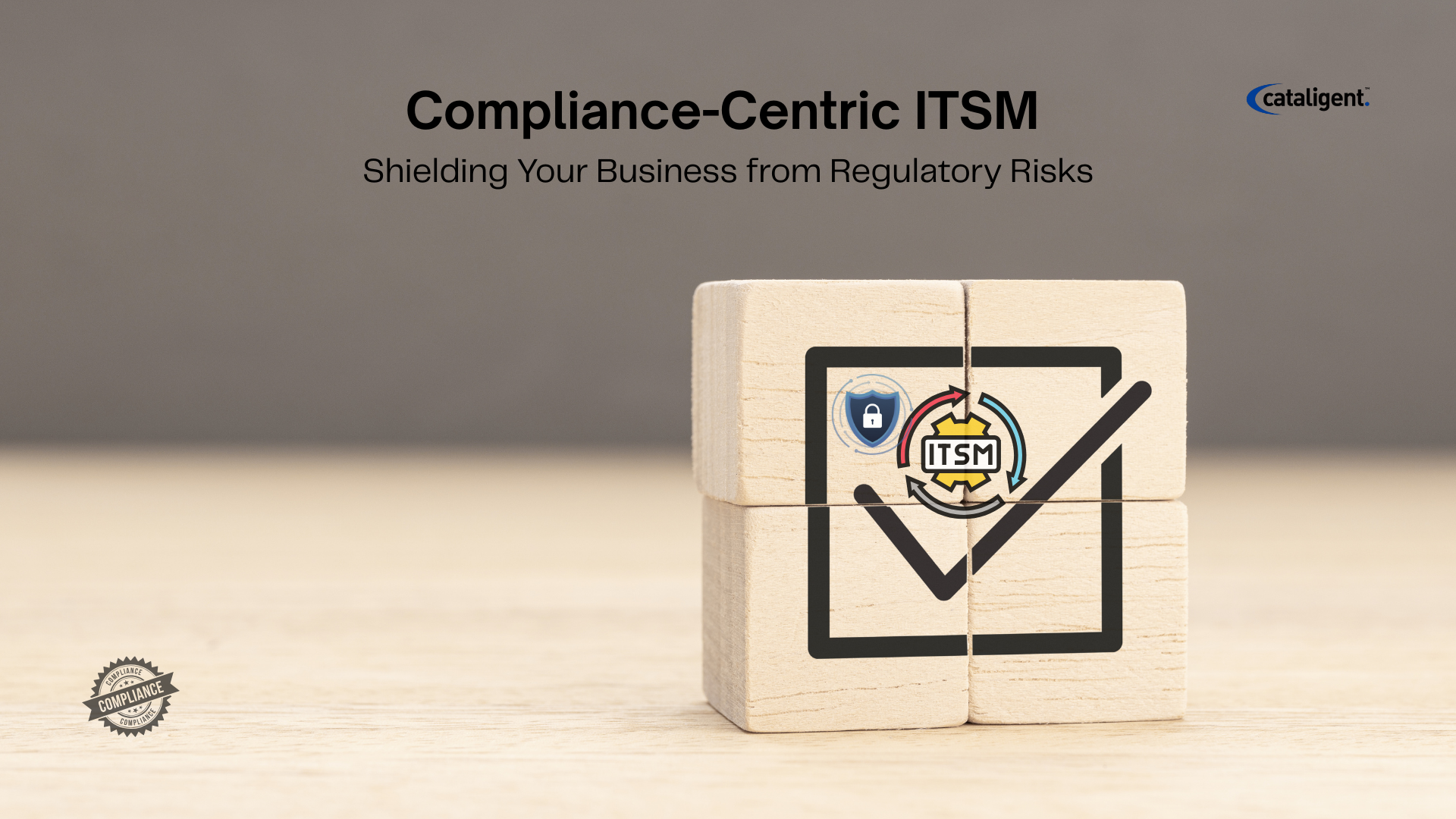Regulatory breaches can be costly, damaging both the financial stability and reputation of an organization. Compliance-centric IT Service Management (ITSM) ensures that IT operations adhere to industry standards and legal requirements, turning regulatory adherence into a strategic advantage rather than a burden.
What Compliance-Centric ITSM Is
Compliance-centric ITSM integrates standard IT service management practices with compliance and governance requirements. It ensures that all IT processes, changes, and services follow legal regulations, industry standards, and internal policies, thereby reducing risks and enhancing trust with stakeholders.
Why ITSM Is Essential for Regulatory Compliance
In an era of stringent data privacy laws, cybersecurity requirements, and industry-specific regulations, non-compliance can lead to severe penalties. Compliance-centric ITSM addresses this by:
- Enforcing Standardized Processes: Ensures IT operations consistently meet compliance criteria.
- Reducing Risk Exposure: Minimizes the chance of legal, financial, and reputational damages.
- Supporting Audit Readiness: Maintains accurate records and documentation for regulatory reviews.
- Enhancing Operational Transparency: Provides visibility into IT operations and decision-making.
- Aligning IT with Business Governance: Integrates IT processes with overall corporate compliance strategy.
Core ITSM Components Supporting Compliance
- Change Management: Ensures IT system modifications comply with policies and minimize operational risks.
- Incident and Problem Management: Tracks and resolves issues systematically to maintain compliance standards.
- Service-Level Management: Monitors and reports on SLA adherence in line with regulatory requirements.
- Configuration Management: Maintains accurate records of IT assets and their configurations for auditing purposes.
- Knowledge Management: Documents compliance procedures, policies, and incident resolutions to support accountability.
Strategies to Implement Compliance-Centric ITSM
- Regulatory Gap Analysis: Assess current IT processes against industry regulations and standards to identify compliance gaps.
- Integrated Compliance Frameworks: Incorporate ITIL, COBIT, and ISO standards into ITSM practices for consistent adherence.
- Automated Monitoring and Reporting: Use ITSM tools to track compliance metrics, generate reports, and flag potential risks.
- Regular Training and Awareness: Educate IT staff on compliance requirements and ITSM protocols to reduce human error.
- Audit-Ready Documentation: Maintain centralized records of IT changes, incidents, and service performance for audits.
- Continuous Improvement: Regularly review compliance processes, update ITSM workflows, and adapt to evolving regulations.
Business Impact of Compliance-Centric ITSM
- Minimized Legal and Financial Risk: Structured ITSM processes prevent compliance breaches.
- Operational Transparency: Clear visibility into IT operations enhances governance.
- Improved Audit Readiness: Accurate documentation supports efficient regulatory audits.
- Enhanced Stakeholder Trust: Reliable, compliant IT operations strengthen customer and investor confidence.
- Sustained Business Growth: Efficient compliance practices allow focus on strategic initiatives without disruption.
How Cataligent Supports Compliance-Centric ITSM
Cataligent delivers ITSM solutions that seamlessly integrate compliance management into IT operations. Their services help businesses mitigate regulatory risks while optimizing IT efficiency.
- Automated Change and Incident Management: Ensures IT processes adhere to regulatory requirements.
- SLA and Performance Monitoring: Provides insights into compliance performance.
- Knowledge and Configuration Management: Centralizes compliance-related documentation for easy access.
- Security and Risk Management: Safeguards IT systems to maintain regulatory integrity.
- Scalable and Adaptable Solutions: Supports evolving compliance requirements across industries.
With Cataligent’s expertise, organizations can proactively manage compliance, reduce regulatory risk, and maintain operational efficiency.
Conclusion
Compliance is a critical component of modern business operations, and ITSM can be the backbone that ensures adherence while optimizing IT services. By implementing compliance-centric ITSM through Cataligent’s solutions, organizations can mitigate regulatory risks, maintain operational efficiency, and transform compliance into a strategic advantage. This approach enables businesses to focus on growth, innovation, and reliability, all while staying fully compliant with industry standards and regulations.

